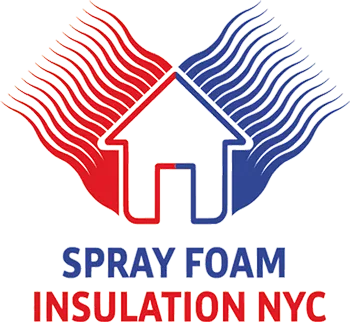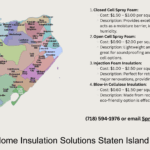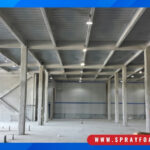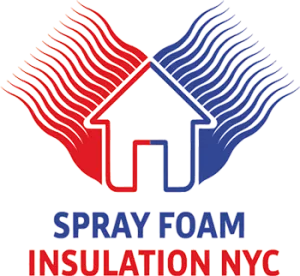How to Insulate a Balloon Frame House with Spray Foam
Proper insulation is key to creating an energy-efficient, comfortable home, regardless of its age or style. However, insulating a balloon frame house—a construction style common in the mid-19th century—comes with its unique challenges. The continuous wall cavities of balloon frame structures make them notoriously hard to insulate using traditional methods. Luckily, spray foam insulation offers an effective and efficient solution for this unusual construction type.
This guide will not only explain why spray foam insulation is the ideal choice but also walk you through the process, benefits, and considerations of using it to insulate balloon frame houses. Whether you’re a DIY enthusiast or considering professional installation, this post has you covered.
What Are Balloon Frame Houses?
Defining Balloon Framing
Balloon framing is a construction technique that became popular during the Industrial Revolution due to its simplicity and efficiency. It uses long, vertical wooden studs that run continuously from the foundation to the roof, eliminating the need for heavy timber frames. While this design enabled easier construction, it created uninterrupted wall cavities, which are difficult to insulate effectively using traditional methods.
Characteristics and Insulation Issues
The continuous wall cavities, while innovative at the time, lead to significant challenges today:
- Access Difficulties: Traditional insulation often requires cutting into walls, creating access doors, or removing siding, which is labor-intensive.
- Air Leaks: Without proper separation between floors, balloon frame houses are prone to drafts and air leaks, reducing energy efficiency.
- Irregular Wall Shapes: These walls are not always uniform, making it hard for rigid insulation materials like fiberglass or foam boards to fit seamlessly.
Given these challenges, conventional methods fall short, making spray foam insulation a superior alternative.
Why Spray Foam Is Perfect for Balloon Frame Homes
Spray foam insulation is a game-changer for balloon frame houses, offering benefits that traditional solutions can’t match:
What Is Spray Foam Insulation?
Spray foam insulation is a two-component material that expands upon application. When sprayed into wall cavities, it fills every nook and cranny, creating an airtight seal.
Key Benefits for Balloon Frame Structures
- Comprehensive Coverage
Spray foam expands to reach all corners and irregular shapes, ensuring complete insulation without gaps.
- Air Sealing
It prevents drafts and air leaks by forming a tight seal, a must for the uninterrupted cavities of balloon frame houses.
- Energy Efficiency
Homeowners can cut up to 20–50% on energy bills by reducing heat loss and improving thermal performance with spray foam insulation.
- Moisture Barrier
Closed-cell spray foam acts as a vapor barrier, protecting your home from mold and mildew caused by trapped moisture.
- Non-Invasive Installation
Spray foam can be injected into walls through small access holes, preserving the structural integrity and appearance of your home.
Comparing Spray Foam to Traditional Insulation Methods
Unlike fiberglass batts or rigid foam boards, spray foam adheres tightly to surfaces and adapts to irregular shapes. Its air-sealing capabilities are unmatched, reducing reliance on other sealing materials like caulk or weatherstripping.
DIY vs. Professional Installation
When considering spray foam insulation, you’ll need to decide whether to tackle the project yourself or hire professionals.
DIY Installation
- Pros:
- Saves money on labor costs.
- You’re in control of the project timeline.
- Cons:
- Requires specialized equipment and protective gear.
- Risk of uneven application, which can reduce insulation performance.
- Safety Note: Spray foam chemicals can emit fumes that require proper ventilation and safety measures.
Professional Installation
- Pros:
- Experienced professionals ensure flawless application.
- Expertise in handling balloon frame-specific challenges.
- Cons:
- Higher upfront cost.
- When to Hire a Pro:
- If your home has difficult-to-reach cavities.
- If you lack experience or confidence working with spray foam materials.
How to Insulate a Balloon Frame House with Spray Foam
When insulating with spray foam, following a structured process is key:
Step 1: Pre-Inspection and Preparation
- Remove siding or interior panels to access wall cavities.
- Inspect for structural issues or damage before insulating.
- Protect surfaces in work areas with tarps or drop cloths.
Step 2: Drill Access Holes
- Drill small holes at strategic points along each cavity to allow foam injection. Begin at the bottom of the wall to ensure proper foam layering.
Step 3: Inject Spray Foam
- Use a professional-grade foam gun for even and thorough application.
- Start from the bottom and work upwards to allow proper expansion and avoid air pockets.
Step 4: Post-Insulation Inspection
- Ensure foam fills every cavity. Double-check air-sealing around windows, doors, and penetrations.
- Repair any drilled holes and reinstall siding or panels.
Step 5: Maintenance Tips
- Check insulation annually for signs of deterioration.
- Ensure external walls remain sealed and free of damage.
Real-Life Success Stories
Case Study 1: Energy Savings
A homeowner in New Jersey insulated their 19th-century balloon frame home with closed-cell spray foam. The result? Their energy bills dropped by 40%, and they reported a significant improvement in indoor comfort.
Case Study 2: Before-and-After Comparison
Another homeowner in Illinois shared thermal imaging photos of their home before and after spray foam installation. Previously cold rooms now retain heat evenly, even in the harshest winter months.
Both examples showcase how spray foam insulation not only addresses air leakage but also enhances overall comfort and efficiency.
FAQs About Spray Foam for Balloon Frame Houses
Is Spray Foam Safe for Older Homes?
Yes, when applied correctly by professionals, spray foam adheres tightly without damaging the structure. Always consult an experienced contractor to assess your home’s suitability.
What About Moisture Problems?
Closed-cell spray foam resists moisture, reducing the risk of mold and mildew—a common concern with older balloon frame houses.
Does Spray Foam Add Value to My Home?
According to national insulation studies, spray foam can increase your home’s resale value by improving energy efficiency and overall market appeal.
Start Your Energy-Efficiency Journey Today
Spray foam insulation is the ultimate solution for balloon frame houses. It’s non-invasive, highly effective, and provides comprehensive benefits such as reduced energy bills, enhanced comfort, and improved sustainability. Whether you’re a DIY enthusiast or prefer professional installation, there’s no reason to delay this upgrade.
For even greater peace of mind, consulting an experienced insulation contractor is the best move. Want to explore your options? Start your insulation project today for a cozier, more energy-efficient home.











